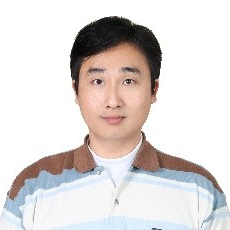Nano Minerals Applications in Pollutants Removal
A special issue of Materials (ISSN 1996-1944). This special issue belongs to the section "Advanced Nanomaterials and Nanotechnology".
Deadline for manuscript submissions: closed (10 November 2022) | Viewed by 3004
Special Issue Editors
Interests: environmental remediation; surface adsorption; porous materials; MOF materials; clay minerals
Special Issues, Collections and Topics in MDPI journals
Interests: modified clay minerals; nanoclay; clay–polymer nanocomposites; contaminant removal; arsenic biogeochemistry; poly and perfluoro alkyl substances
Special Issues, Collections and Topics in MDPI journals
Special Issue Information
Dear Colleagues,
Environmental pollutants such as heavy metals and organic contaminants are discharged in a huge quantity from industries and agriculture. On the other hand, medical drugs such as antimicrobials are used for the therapeutic treatment of diseases in humans and animals such as cattle, swine, poultry, and fish for growth promotion. Today, as a consequence of the overuse of chemicals in agriculture, industries, and uprising of prescription medicines as polar molecule pollutants in the aquatic environment, we have been placed in a more hostile environment with many hazardous materials, whose impact on the local environment is omnipresent. This phenomenon has led to concerns because these discharged contaminants, including pharmaceuticals, can persist in the environment and be ingested either via the food chain or via drinking water in the long run. We cannot emphasize the importance of the removal potency of adsorbents too much. Consequently, the detection, investigation of their environmental behaviors, and removal using different quality materials have become a strikingly urgent issue.
The main objective of the issue is to motivate international experts to focus on environmental contaminants. We invite investigators to contribute original research articles as well as review articles that will stimulate the continuing efforts to understand the adsorption mechanisms, transportation, removal technologies, and management related to materials and technologies for the removal of pollutants from soil and water.
This Special Issue discusses recent advances in chemistry, providing examples from research conducted all over the world. Among the topics to be discussed are:
- Adsorption: batch studies and column studies;
- Development of advanced nanomaterials with the capacity of removal of a wide range of contaminants;
- Configuration and molecular simulation of the adsorbates in the adsorbents;
- Innovation technologies on removal, including clay/biochar supported nanomaterials;
- Novel analytical approaches for the study of natural geochemical and environmental agents;
- Clay/nanomaterials–microbe interaction and biotransformation of organic contaminants.
Prof. Dr. Pohsiang Chang
Dr. Raj Mukhopadhyay
Guest Editors
Manuscript Submission Information
Manuscripts should be submitted online at www.mdpi.com by registering and logging in to this website. Once you are registered, click here to go to the submission form. Manuscripts can be submitted until the deadline. All submissions that pass pre-check are peer-reviewed. Accepted papers will be published continuously in the journal (as soon as accepted) and will be listed together on the special issue website. Research articles, review articles as well as short communications are invited. For planned papers, a title and short abstract (about 100 words) can be sent to the Editorial Office for announcement on this website.
Submitted manuscripts should not have been published previously, nor be under consideration for publication elsewhere (except conference proceedings papers). All manuscripts are thoroughly refereed through a single-blind peer-review process. A guide for authors and other relevant information for submission of manuscripts is available on the Instructions for Authors page. Materials is an international peer-reviewed open access semimonthly journal published by MDPI.
Please visit the Instructions for Authors page before submitting a manuscript. The Article Processing Charge (APC) for publication in this open access journal is 2600 CHF (Swiss Francs). Submitted papers should be well formatted and use good English. Authors may use MDPI's English editing service prior to publication or during author revisions.
Keywords
- nanomaterials
- nanoclay minerals
- adsorption mechanism
- medical drug
- heavy metals
- organic contaminants
- pharmaceuticals
- medicinal drugs
- molecular simulation
- morphology







